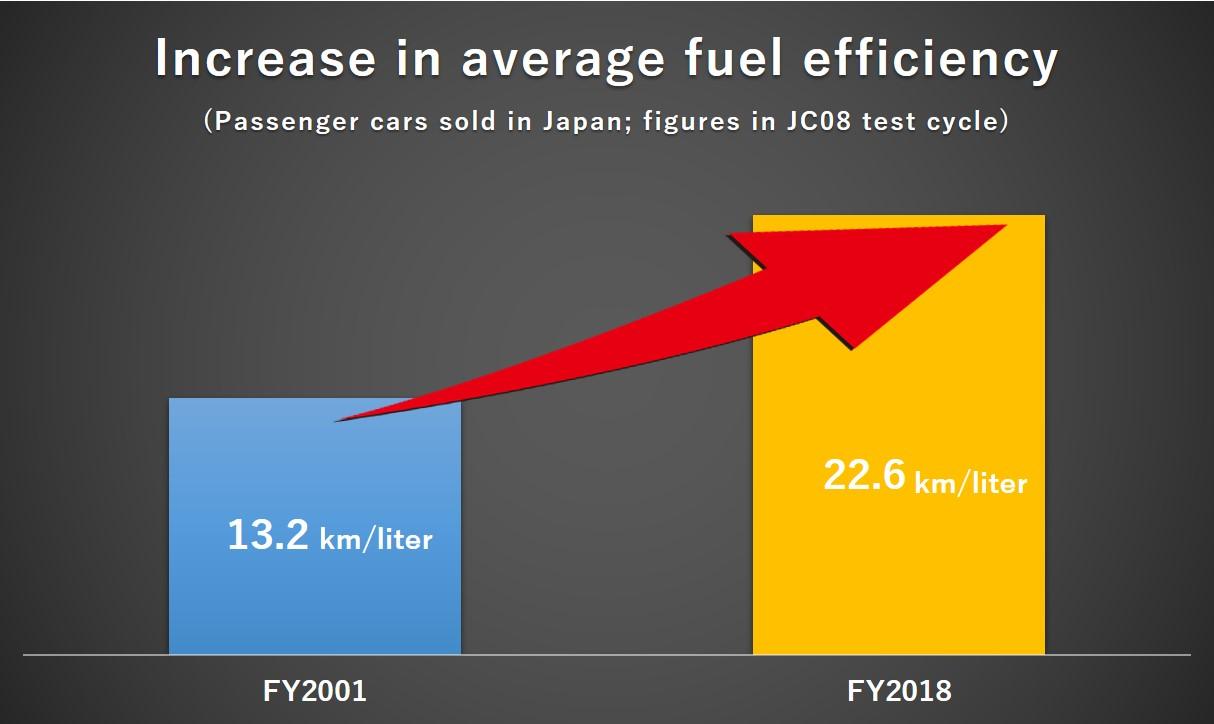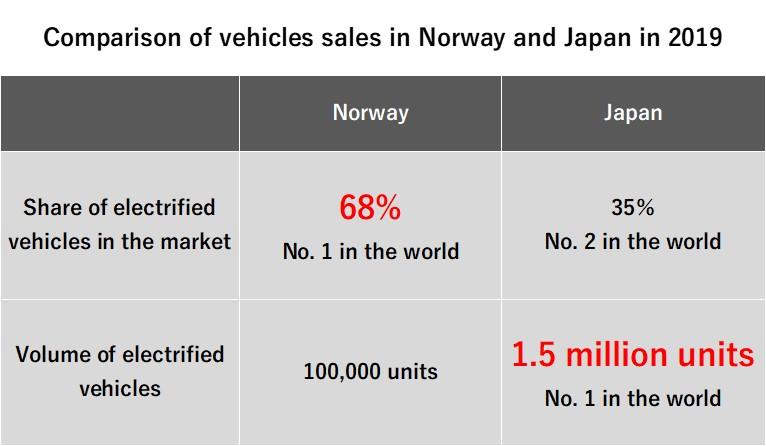
Representing Japan's automotive industry, Akio Toyoda recently explained various efforts within the industry and shared his thoughts on the trending theme of carbon neutrality in Japan. Several media platforms, including Twitter, presented Akio as saying that BEVs are overhyped. What did Akio actually say and what were the points he was trying to make?

On December 17, 2020, Akio hosted an online roundtable with the press as chairman of the Japan Automobile Manufacturers Association (JAMA). The 30-minute Q&A session largely centered on carbon neutrality and vehicle electrification, which have been the subject of much public interest in Japan, especially after the Suga administration announced its commitment to achieving carbon neutrality by 2050. Interest was further heightened by reports that the Japanese government had decided to ban the sale of new gasoline vehicles in the 2030s.
Akio’s comments were widely picked up by the media in Japan, triggering further discussions among Japanese people on social media. Toyota Times would like to present and highlight some of the key points Akio was trying to make as the head of JAMA.
Environmental contributions by the automotive industry
The first question from the press was about how Akio views the strict rules and regulations that have been widely discussed overseas, such as in the United Kingdom, and in Japan, including policies banning sales of new gasoline-only or diesel-only vehicles.
Akio responded to the question while providing figures to explain how the automotive industry in Japan has contributed to improving environmental issues.
Akio Toyoda
For those of us who work in the automotive industry in Japan as our home, we are grateful that the Suga administration has made carbon neutrality a pillar of policy at this timing.
At the board of directors meeting this morning, JAMA officially decided to fully take up the challenge of contributing to the administration’s policy for achieving carbon neutrality in 2050.
However, carbon neutrality is unlikely to be achieved without drastic technological innovation, and we fear the risk of losing global competitiveness unless these efforts are made throughout the entire supply chain.
This is a very difficult challenge, and we would like to request the same level of policy and financial support from the Japanese government as is provided by governments in Europe, the United States, and China.
Let’s use some numbers to explain our achievements so far.
The total amount of CO2 emissions in the automotive industry has been reduced by 22% from 230 million tons in FY2001 to 180 million tons in FY2018. Average fuel efficiency has been improved by 71% from 13.2 km per liter in the JC08 test cycle in FY2001 to 22.6 km per liter in FY2018.

Advanced powertrains* accounted for 39% of total new vehicle sales in FY2019 but only 3% in FY2008. Electrified vehicles make up 35% of the Japanese market, which is the second-highest percentage in the world. Norway, with 68%, has the highest percentage, but if we look at each absolute volume, Norway has 100,000 units, compared to 1.5 million units in Japan.
*Types of vehicles with lower CO2 emissions, including hybrid electric vehicles (HEVs), plug-in hybrid electric vehicles (PHEVs), battery electric vehicles (BEVs), and fuel cell electric vehicles (FCEVs).

The total amount of CO2 emissions from our plants has been reduced by 36% from 9.9 million tons in FY1990 to 6.31 million tons in FY2018. Automobile companies in Japan have made much effort, as the data shows.
Determining where to make cars based on CO2 emissions?
When we think about CO2 emissions caused by the automotive business, the most obvious and easy to visualize are CO2 emissions emitted by cars when driving. But there are CO2 emissions other than those. CO2 is emitted during the car manufacturing process. For example, if fossil fuels are used to generate the electricity required to operate equipment at factories, CO2 is emitted. The same can be said when vehicles are scrapped.
While pledging that the automotive industry will fully support Japan’s grand project of achieving carbon neutrality in 2050, Akio shed light on the structural challenges that cannot be solved by the automotive industry alone.
Akio Toyoda
I would like everyone to understand that the goal of carbon neutrality in 2050 will not be achievable without drastic reform in the government’s energy policy.
For example, in Japan, 77% of the total electricity we use comes from thermal power generation and the remaining 23% comes from other means such as renewable energy power generation and nuclear power generation. On the other hand, in France, where energy supply centers on nuclear power generation, 89% comes from nuclear power generation and renewable energy power, and only 11% comes from thermal power generation.

If we consider the situation of how electricity is made and its CO2 emissions in the process when thinking about carbon neutrality, as an example, it would be a rational decision to make the Toyota Yaris in France rather than in Tohoku, Japan. This would mean that we would no longer be able to make the car in Japan.
I’m talking about energy policy rather than manufacturing strategy. Without tackling these issues, I think there is a risk that the current business model of the Japanese automotive business, which aims to preserve monozukuri (making things) in Japan, increase employment, and pay taxes, will be destroyed.
During the pandemic this year, total employment in Japan has been decreased by 930,000 people, but we have increased employment in the automotive industry by 110,000 people (year-on-year increase in October).
If we would not be able to make cars in Japan because of the larger volume of CO2 emissions in the manufacturing process, the employment we have increased during the COVID-19 pandemic might be reduced to zero.
Is this really a good thing for this country? The automotive industry is hanging on by its fingernails, so I would like for you to present information fairly.
The result of all cars in Japan being BEVs
Electrified vehicles are sometimes simply described as BEVs. Many people also misunderstand that all cars on the road will eventually be BEVs, even though electrified vehicles offer a wide variety of choices.
To correct such misconceptions, Akio shared an estimate that explains the potential impact there would be if all cars in Japan were replaced by BEVs.
Akio Toyoda
In this case (if all 60 million vehicles on the road in Japan were replaced by BEVs), there would be a shortage of electricity when usage peaks in the summer months in Japan. To solve this problem, we would have to increase power generation capacity by 10-15%. That is the equivalent of 10 additional nuclear power plants or 20 additional thermal power plants.
Also, if all cars were replaced by BEVs, the total investment cost required for charging infrastructure would be from approximately 14 trillion to 37 trillion yen. Let me give you some examples. Increasing the maximum ampere rating costs 100,000 to 200,000 yen per detached house, and, in the case of multiple-dwelling complexes, it costs 500,000 to 1.5 million yen. For fast chargers, the average cost is 6 million yen. In total, the cost of a charging infrastructure would be from approximately 14 trillion to 37 trillion yen.
As for manufacturing challenges (if the current level of 4 million new passenger car sales in Japan were replaced by BEVs), there would need to be 30 times more battery production capacity, and the investment required for such a capacity increase would be about 2 trillion yen.
Also, charging and discharging a BEV’s batteries is necessary in the final inspection process of BEV production. Currently, in general, the electricity storage volume in one BEV is equivalent to the level of electricity used in an average house.
A plant producing 500,000 BEVs a year would charge and discharge enough electricity to power 5,000 homes per day during the inspection process alone. And again, a large amount of CO2 is emitted in generating electricity by thermal power plants.
I wonder if politicians and everyone else understand this when they say there should be no gasoline-powered cars. We would like you to view this correctly.
Japan’s uniqueness
The next question was about the electrification plan for minivehicles (kei cars), which account for 40% of total new car sales in Japan.
Minivehicles are a unique aspect of the Japanese automotive market. With their small size, light body, and maximum engine displacement of 660cc, many minivehicle models boast high fuel efficiency. In most cases, they are more affordable than usual passenger cars.
Akio explained how this uniqueness needs to be considered in discussing electrification plans.
Akio Toyoda
For example, Daihatsu, with its business centered mainly on minivehicles, now has a very low rate of electrified vehicles. However, minivehicles are widely appreciated in Japan. In Japan, 85% of roads are so narrow that two cars can’t drive by each other at the same time unless they are minivehicles.
We may be able to live without minivehicles in urban areas of Japan, but in rural areas, minivehicles are a complete lifeline. In the CASE era, with many rules related to electrification, we, in the automotive industry, should not forget the importance of minivehicles and their customers.
When you hear the press roughly explain that all we need to do is get rid of gasoline-powered vehicles, people with little understanding may think that this is a shortcut to carbon neutrality.
However, the reality is that there should and will be a mix of HEVs, PHEVs, FCEVs, and BEVs. I believe that the way for Japan to survive is to preserve and improve the strength of Japan based on this mix. I would like to ask for your support in this.
Repeated request for understanding
During the session, Akio repeatedly requested understanding at the end of his responses to the reporters’ questions. It was because he had a strong sense of crisis that media reports based on incorrect views will lead to misunderstandings among the general public, which could create unreasonable governmental regulations.
The press even asked about what kind of actions he is considering to promote correct understanding on this topic, to which Akio shared his thoughts on media reports.
Akio Toyoda
I may be criticized if I say such things, but I would like the press to stop focusing on confrontational views. You can express anything freely under democracy, but if you focus on minor and twisted perspectives and compare those with true mainstream views, it becomes a discussion of A versus B, which leads to misunderstanding among the public.
I think that public opinion is determined by the “silent majority,” whose members choose what they think is correct among a variety of opinions that are freely expressed.
What the industry should do
In its history, the automotive industry has overcome many challenges including tough environmental challenges. During the process of overcoming challenges, it is always important to deliver voices and perspectives from the industry to policy makers and the public. The last question of the day was about what Akio, as JAMA chairman, could do to make the voice of the industry heard.
Akio Toyoda
We, the automotive industry, have committed to proactively taking on challenges to achieve carbon neutrality while understanding that drastic reform of energy policy is necessary.
We, Japanese companies, have continuously made efforts even for very difficult challenges, as long as they are safe and good for the environment.
Additionally, I think we should never forget the customer’s point of view, as we advance toward the future. Our role is to mass-produce products or services. However, no matter how good the specs are, it would be pointless if what we produce is too expensive for the general public to enjoy.
We should also never waver in our focus to make a better future. In automated driving, we should always focus on safety first, with zero traffic fatalities. In electrification, we should be focusing on reducing CO2 emissions and preventing global warming.
Although our ability is limited, I would like to assure you that we will continue to make suggestions and discuss issues from the customer’s point of view during various opportunities.
Representing JAMA, Akio fully expressed with passion and honesty over the 30 minutes how the industry is committed to and willing to move forward toward a better future.

